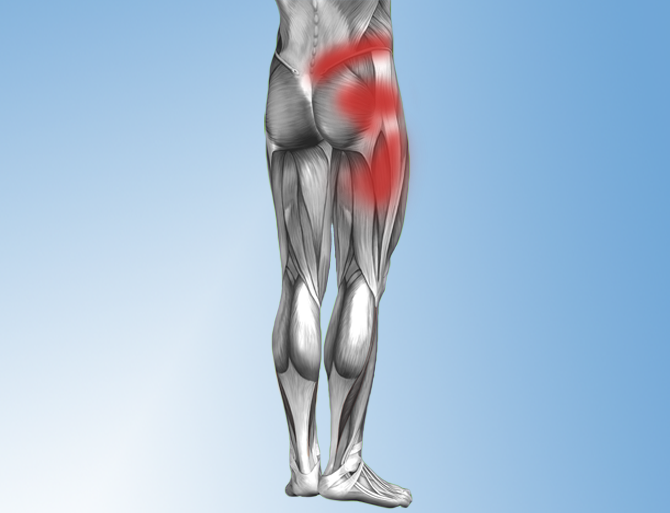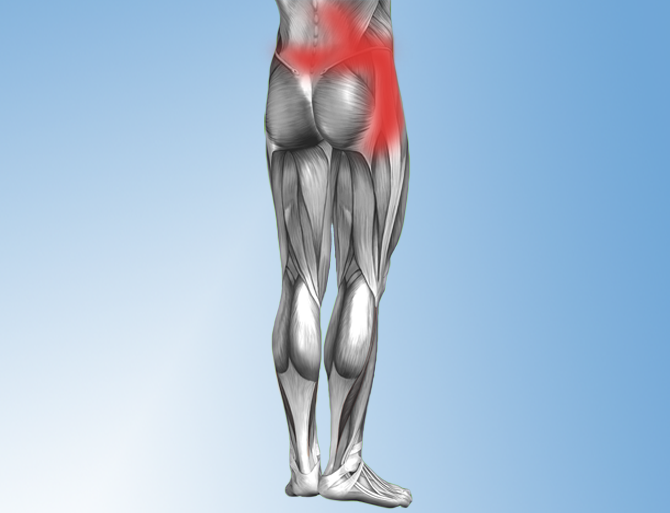Chiropractic therapies to relieve hip pain.
Pain over the hip area is one of the primary complaints seen for chiropractic care. Some of the common hip conditions that chiropractors see include:
- Hip Alignment / Motion Dysfunction
- Hip Tendonitis
- Hip Bursitis
- Hip Arthritis
- Snapping Hip Syndrome
- Hip Referral

- These issues can occur at any age
- Typically the patient can be of any age category and present with normal x-ray and/or MRI
- These are usually the cases where the patient has been to several doctors for hip pain but all of the tests are negative
- The pain is usually towards the side or back of the hip with or without radiation into the gluteal region, IT band and/or groin
- The pain is usually worse with movement and weight bearing and better with rest
- Stairs can be problematic as well as sleeping on the involved side
Chiropractic assesment is key in these cases where motion and soft tissue assessment can make a significant difference in how these cases are treated.
If alignment, asymmetry, and/or hypo/hyper mobility is found, it can easily be corrected with chiropractic adjustments.

- Tendons can become inflamed for a variety of reasons such as overuse, beginning a new exercise or starting a new activity such as running in the spring when you’ve been idle all winter
- Most commonly occurs 40-60 year old age bracket but can come on at any age
- The pain is located directly over the hip joint and palpation of the tendons increases the pain response
- Hip tendonitis can linger because tendons usually have a poor blood supply and this can sometimes lead to more extensive damage if not rested and attended to
- There is pain with movement such as walking, sitting and arising from a seated to standing position and sleeping can be distorted because it is often painful to lay on the side of involvement
Traditional approaches include NSAIDS, rest, ice and physical therapy if non-responsive.
Chiropractic approach to hip tendonitis is more geared to assuring the hip has proper alignment and motion. Chiropractic adjustments to the hip area often provide much relief, especially if the hip joint is dysfunctional. Note, a dysfunctional hip may not only precede tendonitis but can also be the result of tendonitis. This is why chiropractic care is so important in hip tendonitis that doesn’t seem to be healing quickly.
Chiropractors also use natural medicine to help ease the inflammation quickly without the harmful side effects of many NSAID’s. The dual approach can rapidly solve many hip tendonitis problems.

- Also known as trochanteric bursitis
- This is a common problem that causes inflammation of the hip bursa
- Pain is located over the hip and it is usually associated with pain and swelling depending on the severity
- The hip area can also seem warm to the touch due to the inflammation and fluid accumulation around the joint
- Pain is usually moderate to severe and is exacerbated with movement, walking or any form of weight bearing.
- May also interrupt sleep
Chiropractors approach to trochanteric bursitis is not only inflammation contril but also assuring the hip has proper alignment and no motion restrictions. Chiropractic adjustments often provide much relief especially if the hip joint is dysfunctional or has motion deficits.
Chiropractors usually use natural medicine to help ease the inflammation quickly without the harmful side effects of many NSAID’s.

- Osteoarthritis of the hip is a common problem seen in the chiropractic setting
- Osteoarthritis is the most common type of arthritis
- This occurs when the joint cartilage that covers the ends of the bone wears away leading to a bone-on-bone grinding and pain
- There can be many reasons why people get arthritis but the most common is “wear-and-tear”
- The pain is usually local to the hip and can be associated with underling inflammation leading to “flair-up’s”
- The pain is usually worse with activity or stressing the joing in some way such as vacuuming or planting flowers and better with rest
- The first sign of symptoms may be an “achy hip” and over time the hip becomes more achy more frequently.
- Aging, obesity, overweight, joint injuries, family and poor diet can all contribute to an arthritis hip
Chiropractic approach to hip arthritis is more assuring the hip has proper alignment and motion. Often times we find deficits in range of motion of the hip with underlying arthritis. Chiropractic adjustments to the hip often provide more motion to the joint and better alignment leading to more pain relief with natural correction.
Natural medicine if often used to support the hip join and to help ease the pain quickly without the harmful side effects of many NSAID’s

- This is an oddly named condition that may be the result of one of three distinct hip problems
- The name “snapping hip” was given because of an audible popping noise that is made by the hip joint when it is either flexed or extended or both
- It is usually due to a tendon catching on a bony prominence giving a snapping sound and/or sensation
- It may feel like the ball of the hip is going to dislocate from the socket
- Iliotibial Band or IT band can be one of the causes as this tendon can catch on the greater trochanter of the hip
- Iliopsoas muscle passes in front of the hip joint and is another possible cause as it can catch on a bony prominence of the hip
- Labral tear is yet another possible cause as a tear in the cartilage within the hip joint may create a loose flap that may catch within the joint – This is the least common cause of snapping hip syndrome
Treatment of snapping hip is different upon the cause. Chiropractic treatment can work well for issues involving the it band and/or the Iliopsoas muscle. Only an MRI can determine if a labral tear is the underlying cause.

- Many spine problems can product symptoms over the hip via referred pain
- The key here is when hip pain has been diagnosed and treated and there is no relief or resolution of the hip problem
- As with all problems it is important to get an accurate diagnosis
- Sacroiliac Joine referred pain can target the hip joint – typically pain from the gluteal area that wraps around to the hip may be a clue to sacroiliac joint referral
- Discogenic referred pain is another source of pain encompassing some areas around the hip – this is when there is some form of damage to the disc but the disc does not fully herniate leading to a semi-normal MRI
Dr. Picard can help – learn about his Chiropractic services.

